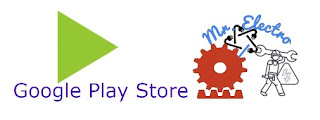Electrical Generator means an electrical equipment which is used in power plant to generate electricity by rotating the generator shaft with prime mover. There are different types of generator which can be used in power plant such as DC generator, 3 phase Induction generator, 3 phase synchronous generator. Generally, in small type of power plant or in remote area, 3 phase induction generator is used for power production. We have already discuss about 3phase induction motor. Here we are going to discuss about 3 phase induction generator, how does an induction generator work, grid connected & stand-alone/isolated types, advantages, limitation & application.
Induction generator || What is induction generator?
Induction generator is an AC generator which will produce 3 phase AC electricity by the help of prime mover ( like turbine) that can be further converted into different form of voltage for the use of different places like domestic, commercial etc. It is also known as asynchronous speed. Actually, induction generator is also a 3 phase induction motor and it acts like motor when it is started. At that time, it draws lagging reactive power ( Voltamperes) from the supply. A 3 phase induction motor will act like induction generator only when it rotates more than synchronous speed of that motor. For example, A 4 pole 3 phase induction motor with 50 Hz frequency then, its synchronous speed is 1500 rpm ( 120 x 50 / 4 ) then, if that machine runs more faster than 1500 rpm it will act like generator i.e. this is called induction generator. For that rotation, it need extra prime mover like turbine or motor which shaft is connected to that induction generator to rotate it in same direction of rotating field produced by the stator winding for the production of electricity.
On generating mode, this will produce generating torque which is opposite of rotation of rotor and the slip will also negative. The output electricity generated by induction generator is depend on magnitude of the slip value ( negative slip ) which also means, how fast the rotor will rotate above the synchronous speed.
Types of induction generator (IG)
1. Grid connected IG
The rotor of IG need to run beyond the synchronous speed by prime mover and for excitation, reactive power need to supplied by grid or drawn from grid.
2. Stand-alone IG
The rotor will run more than synchronous speed and for excitation, there is capacitor (star or delta connected).
How does an induction generator works ?
In the given figure above, C1, C2, C3, C4 are different value of the capacitor which are used in the capacitor bank for excitation in stand-alone IG. E1 and E2 are the induced voltage that will generate at final in this process and IC1 and IC2 are the leading current through the capacitor. Here C1, C2, C3, C4 are in decreasing form where C1 and C2 are capable of producing emf and C3 is critical capacitor where no emf is induced. Below the value of critical capacitor, voltage will not induce so it is necessary to use a good value of capacitor according to magnetizing characteristic and V-I characteristic. For the value of capacitor in capacitor bank, our engineering calculator is there for that calculation.







No comments:
Post a Comment
----Please share your opinion with us-----